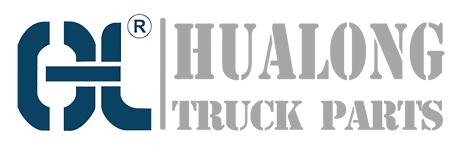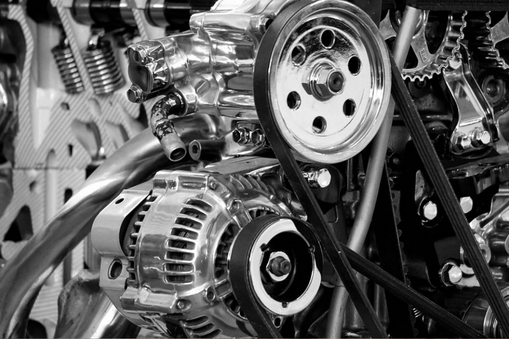Everything You Need to Know About ODM & OEM Parts for Your Business Needs
OEM and ODM parts are two important categories of products that many businesses choose to use in their projects. In this article, you will learn everything you need to know about the differences between these two kinds of parts, their benefits and how they can help your business meet its goals. You'll also gain an understanding of the right way to go about selecting the right manufacturer for your specific needs so that you get quality parts that fit into your budget.
What are ODM and OEM Parts, and What Makes Them Different?
Original Design Manufacturing (ODM)
ODM stands for "Original Design Manufacturer." In the manufacturing industry, ODM refers to a company that designs and manufactures a product that is then branded and sold by another company. The product is unique to the selling company and is not available for purchase by other companies.
In the context of consumer goods, this means that a company will create a product and then sell it to another company, which will then sell it under its own brand name. The ODM company does not sell the product under its own brand name and is only responsible for the design and manufacturing of the product.
In general, ODM products can offer a cost-effective solution for companies looking to bring a product to market quickly and efficiently, as the ODM company takes care of the design and manufacturing, allowing the selling company to focus on marketing and sales.
Original Equipment Manufacturing (OEM)
OEM stands for "Original Equipment Manufacturer." In the automotive industry, OEM parts are parts that are manufactured by the same company that made the original parts for a specific vehicle. They are designed specifically for that make and model, and are often of higher quality compared to aftermarket parts.
OEM parts are designed to work seamlessly with the other components in a vehicle and are tested to meet the same standards as the original parts. They are made from high-quality materials and are built to last.
When you purchase OEM parts, you can be sure that you are getting a product that has been specifically designed and tested for your vehicle. This can provide peace of mind and ensure that your vehicle continues to perform at its best. Additionally, using OEM parts can help to maintain the value of your vehicle and can be a factor in determining resale value.
In general, OEM parts are more expensive than aftermarket parts, but they are often worth the investment due to their higher quality and compatibility with your vehicle.
keywords: determining the right manufacturing process, odm or oem components
The Advantages and Disadvantages of Using ODM & OEM Parts for Your Business
Advantages of using ODM parts for your business:
Cost savings: ODM parts can be less expensive than OEM parts, which can help you reduce costs and increase profitability.
Faster time to market: ODM companies handle the design and manufacturing, allowing your business to focus on other aspects of bringing the product to market, such as marketing and sales.
Access to expertise: ODM companies often have specialized expertise in design and manufacturing that your business can leverage to improve product quality and efficiency.
Flexibility: ODM parts can be customized to meet your specific needs and requirements.
Disadvantages of using ODM parts for your business:
Quality control: Quality control can be a challenge when working with ODM parts, as the manufacturer may not be held to the same standards as OEM parts.
Lack of compatibility: ODM parts may not be compatible with other parts and components, which can result in problems and increased costs.
Intellectual property concerns: ODM parts may not be protected by intellectual property rights, which can lead to legal issues.
Advantages of using OEM parts for your business:
Quality assurance: OEM parts are designed and manufactured to meet the same standards as the original parts, providing quality assurance and peace of mind.
Compatibility: OEM parts are designed specifically for a specific make and model, ensuring seamless compatibility with other parts and components.
Brand recognition: Using OEM parts can help to maintain the reputation of your brand and the value of your product.
Resale value: Using OEM parts can help to maintain the resale value of your products.
Disadvantages of using OEM parts for your business:
Cost: OEM parts can be more expensive than ODM parts, which can increase costs and reduce profitability.
Limited customization options: OEM parts are designed specifically for a specific make and model, which can limit customization options.
Dependence on the OEM: Your business may become dependent on the OEM for parts and components, which can limit your flexibility and bargaining power.
Which Manufacturing Process is Right For Your Product? Making the Decision Between ODM & OEM
The choice between ODM and OEM depends on several factors, including:
Cost: If cost is a primary concern, ODM may be a more cost-effective solution. However, it is important to consider the long-term costs associated with quality control, compatibility, and intellectual property rights.
Quality control: If quality is a top priority, OEM may be the better option, as the original equipment manufacturer has a vested interest in producing high-quality parts.
Lead time: If you need to get your product to market quickly, ODM can be a faster solution, as the ODM company handles the design and manufacturing.
Customization: If you need to customize your product, ODM may be a better option, as the ODM company can design parts specifically to meet your needs.
Intellectual property: If intellectual property is a concern, OEM may be the safer choice, as the original equipment manufacturer has a vested interest in protecting its intellectual property rights.
Long-term partnerships: If you are looking to establish a long-term partnership with a supplier, OEM may be the better option, as the original equipment manufacturer has a vested interest in maintaining a strong, long-term relationship.
It is important to consider all of these factors when making a decision between ODM and OEM. Each option has its own set of advantages and disadvantages, and the right choice will depend on the specific needs and requirements of your business. A careful evaluation of the costs and benefits of each option can help you make an informed decision that is right for your business.
5 Tips To Choose The Best ODM & OEM Part Suppliers That Fit Your Needs
- Conduct thorough research: Research potential suppliers, including their reputation, experience, and customer feedback. This will help you to find reliable and trustworthy suppliers.
- Evaluate the quality of the parts: Look for suppliers that use high-quality materials and advanced manufacturing processes to produce parts that are durable and reliable.
- Consider compatibility: Ensure that the parts you choose are compatible with your products, to avoid compatibility issues and reduce costs.
- Consider lead time: Choose suppliers that can provide parts in a timely manner, to help you meet your deadlines and keep your business running smoothly.
- Look for a good value proposition: Choose suppliers that offer a good balance between cost and quality, and that can provide the services and support you need to meet your business goals.
Capitalize on Low Production Costs with Quality Products Through Choosing The Correct Manufacturer : ODM Or OEM?
When choosing between ODM or OEM, it's important to consider both production costs and the quality of the final product. Here are a few things to keep in mind:
Cost: ODM manufacturers typically have lower production costs, as they use their existing designs and manufacturing processes. OEM manufacturers, on the other hand, may have higher production costs, as they have to develop new designs and processes for each customer.
Quality: OEM manufacturers generally have a higher level of quality control, as they have a vested interest in producing high-quality parts. ODM manufacturers may have less quality control, as they are focused on producing low-cost parts.
Customization: ODM manufacturers may offer more customization options, as they can modify existing designs to meet specific customer needs. OEM manufacturers may have more limitations, as they have to follow established processes and designs.
Intellectual property: OEM manufacturers generally have a better understanding of intellectual property rights and take steps to protect their designs and processes. ODM manufacturers may be less concerned with intellectual property and may not take steps to protect their designs.
Lead time: ODM manufacturers may be able to produce parts more quickly, as they can use existing designs and processes. OEM manufacturers may take longer, as they have to develop new designs and processes for each customer.
Ultimately, the choice between ODM or OEM will depend on your specific business needs, including cost, quality, customization, intellectual property, and lead time. By carefully evaluating your options, you can choose the manufacturer that best meets your needs and helps you to achieve your business goals.

